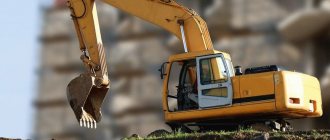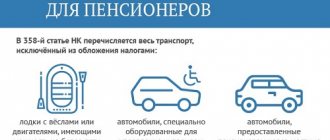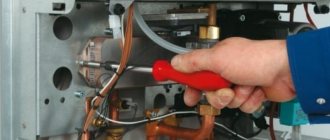The inkjet marker is designed for applying identifiers to goods, packaging and other products, and can be used in small and large enterprises. When organizing accounting for this property, it can be classified into several groups of fixed assets, divided into various depreciation groups. This is due to the fact that such equipment is not directly indicated in the All-Russian Classifier of Fixed Assets (OKOF). Therefore, when drawing up documentation, one should take into account the technical features of the inkjet marker (industrial printer) and its intended purpose.
Why is classification of fixed assets necessary?
As of January 1, 2017, new OKOF codes came into effect, so it was necessary to make changes to the classification methodology. To calculate the amount of depreciation, the accountant determines the method and useful life of fixed assets; the 2021 classifier will help him with this. With its help, the useful life of fixed assets by depreciation groups is determined. The following legal acts regulate this procedure:
- Decree of the Government of the Russian Federation No. 1 of 01.01.2002;
- Decree of the Government of the Russian Federation No. 640 (clause 2) dated 07/07/2016 - updated classifier of fixed assets 2021 with decoding.
Despite changes in classification methodology, depreciation blocks have not changed.
Classification of fixed assets by depreciation groups
According to the updated system, the distribution of objects, based on their useful life period, is carried out in the following ten blocks:
| Depreciation group | SPI, years | Property objects |
| 1 | From 1 to 2 | Machines, equipment |
| 2 | From 2 to 3 | Machinery, equipment, vehicles, production (household) equipment, perennial plantings |
| 3 | From 3 to 5 | Structures, transmission devices, machines, equipment, vehicles, production (household) equipment |
| 4 | From 5 to 7 | Buildings, structures, transmission devices, machines, equipment, vehicles, production (household) equipment, draft animals, perennial plantings |
| 5 | From 7 to 10 | Buildings, structures, transmission devices, machines, equipment, vehicles, production (household) equipment, operating systems not included in other groups |
| 6 | From 10 to 15 | Structures, transmission devices, housing, machinery, equipment, vehicles, production (household) equipment, perennial plantings |
| 7 | From 15 to 20 | Buildings, structures, transmission devices, machines, equipment, vehicles, perennial plantings, OS not included in other groups |
| 8 | From 20 to 25 | Buildings, structures, transmission devices, machines, equipment, vehicles, production (household) equipment |
| 9 | From 25 to 30 | Buildings, structures, transmission devices, machines, equipment, vehicles |
| 10 | Over 30 | Buildings, structures, transmission devices, dwellings, machines, equipment, vehicles, perennial plantings |
The useful life of a particular property is determined using a classifier established by Decree of the Government of the Russian Federation No. 1. To do this, it is necessary to clarify the depreciation group in which these objects are included and indicate the period (in months) within the range of the established period.
IMPORTANT!
Remember that within the specified interval, the taxpayer independently determines the specific period for each main object.
If the classification of fixed assets by depreciation groups 2020 does not include a specific indicator, that is, the required asset is not included in the groups of the table above, then, according to clause 6 of Art. 258 of the Tax Code of the Russian Federation, the institution independently determines its useful life, based on the technical characteristics or recommendations of the manufacturer.
As a more clear example, we present the first section of the classifier from Resolution No. 1 of 01/01/2002 (as amended in 2021) - the first depreciation group, which includes all short-lived property with a useful life from 1 year to 2 years inclusive.
| Code OKOF | Name | Note |
| 320.26.30.11.190 | Communication equipment, transmitting, with receiving devices, other, not included in other groups | Special tool kits for telecommunications equipment and line-cable works; devices and equipment for operational work in connection with |
| 330.26.51.66 | Instruments, instruments and machines for measurement or control, not included in other groups | Equipment and auxiliary equipment for research in wells |
| 330.28 | Machinery and equipment not included in other groups | Equipment for preparatory work during repair and maintenance of production wells |
| 330.28.1 | General purpose machinery and equipment | Construction and installation tools, manual and mechanized |
| 330.28.12.12.120 | Air motors, rotary air motors, air turbines | — |
| 330.28.13.1 | Pumps for pumping liquids; liquid lifters | Condensate, feed and sand, soil, slurry pumps |
| 330.28.13.24 | Air compressors, mobile, on wheeled chassis | — |
| 330.28.13.28 | Other compressors | — |
| 330.28.22.18 | Lifting, transporting and loading and unloading equipment, other | Mobile scraper belt conveyors; equipment, tools and fixtures, fastening devices for the production and installation of ventilation and sanitary products and products; mechanisms, tools, devices, instruments and devices for electrical installation and commissioning work on equipment for industrial enterprises |
| 330.28.22.18.180 | Loading and unloading equipment for rolling mills, not included in other groups | Rolling steel rolls for section, strip and sheet rolling mills |
| 330.28.29 | General purpose machinery and equipment, other, not included in other groups | Tools for metalworking and woodworking machines; diesel engines and diesel generators with a cylinder diameter over 160 mm (diesel and drilling diesel generators) |
| 330.28.30 | Machinery and equipment for agriculture and forestry | Tools, equipment and means of small-scale mechanization for forestry, forest management and taxation purposes |
| 330.28.41 | Metalworking equipment | Diamond and abrasive tools |
| 330.28.92.1 | Equipment for underground mining | Equipment for various methods of oil and gas production |
| 330.28.92.12.129 | Other tunneling equipment | Jackhammers; mechanized tunnel support; downhole motors and rock cutting tools (for oil wells) (turbo drills, augers, turbo bits, chisels, whipstocks, electric drills, reamers, calibrators and others) |
| 330.28.92.12.130 | Drilling machines | — |
| 330.28.92.12.190 | Other tunneling machines | Machines and equipment for charging and driving blast holes; locks and connecting ends to drill pipes; elements of the bottom drill string assembly; drill locks for electric drills; special drill locks |
| 330.28.92.27.190 | Self-propelled machines for mining, other | Fishing tools for eliminating drilling accidents; tools and devices for cutting off second trunks; drilling tools (except rock cutting tools); a tool for screwing-unscrewing and holding tubing pipes and rods suspended during the repair of production wells; fishing tools for production wells; tool for drilling geological exploration wells; tools for oilfield and geological exploration equipment, other |
| 330.28.92.30.190 | Machinery for excavation and construction, other, not included in other groups | Electric and pneumatic vibrators |
| 330.32.50 | Medical instruments and equipment | Tools for the prosthetic industry |
| 330.32.50.50 | Medical products, including surgical, other | Medical instruments |
Types of markers
An inkjet marking machine is one of the most common types of equipment for applying markings to the surface of products. For printing, industrial printers use quick-drying ink, which is sprayed on the surface of the product itself or on its label. Marking can be done with ink of various colors and on almost any material (including smooth and textured surfaces). Depending on the type of equipment, stationary, integrated and hand-held printers are common. Among them are the following types:
- Small sign printer. Designed for printing characters with a height of 2 to 10 mm, which can be printed in several lines. The print head provides high image quality. At the same time, many models provide protection against ink spillage and dirt penetration into the inside of the printing device. The average maintenance period for such devices is 4 years.
- Large sign printer. They print high-resolution characters with a height of 1.5 to 5 cm. Marking can be carried out on smooth and porous surfaces, therefore this type of marking machines is most often used for applying images to cardboard boxes and crates. Many models are equipped with a print head self-service system, which allows you to perform the required work even in a dusty room.
- Label printer-applicator. Prints information onto a label and adheres it to finished products, packaging or shrink film. During the work process, ink of different colors can be used. Depending on the model, the applicator's productivity is on average 300 labels per minute.
- Thermal inkjet printer. Used for marking products with complex or non-standard surfaces. Features high print quality. The work uses hot-melt ink, which is very hot before application and is then sprayed onto the surface.
How to determine depreciation group
During the operation of an object, depreciation is required to be charged on it. In order for deductions to be calculated correctly, the specialist needs to determine the depreciation group of the asset.
Also, in addition to depreciation, the accountant must establish a useful life, that is, the operational period during which depreciation will be charged on the property.
To identify the necessary information, use the classification of fixed assets by groups from RF PP No. 1.
Let's consider two possible situations:
- The main object is presented in the classification by depreciation groups. Information is searched by name or OKOF code. If a specialist has found the asset he needs, he sets the depreciation group and useful life in accordance with the classification. If the position is not found by name, the accountant will continue the search using OKOF and determine the required group.
- If the required item is not in the list of depreciation groups, then the useful life and the depreciation group itself are determined in accordance with the manufacturer’s recommendations, technical data sheet and other documentation of the main property (Letter of the Ministry of Finance of the Russian Federation No. 03-03-06/1/16322 dated 03/22/2017). It is allowed to submit a request for clarification to the Ministry of Economic Development of the Russian Federation or use the uniform standards established by Resolution No. 1072 of October 22, 1990.
IMPORTANT!
Choose your depreciation groups carefully! If a mistake is made, income and property taxes will be calculated incorrectly. After inspections by the tax inspectorate and detection of errors, additional tax payments will have to be added to the budget.
The institution determines its useful life independently, based on its needs for a particular asset in order to make a profit. That is, SPI is equal to the period during which the organization plans to make a profit (clause 4 of PBU 6/01). Moreover, such a period may even be lower than the SPI given in the list of depreciation groups. To secure the useful life of the main property, it is necessary to issue an order, a directive from the head of the institution.
Areas of application
Using inkjet marking printers, you can apply graphic and text images on various materials with a flat or embossed surface. They are great for applying pictures and logos, trademarks and other special marks, the date and time of product manufacture, batch number, expiration date and other important information. They are also used to create digital, barcode and QR codes. During the work, surfaces made of various types of materials can be processed: metal, wood, rubber, glass, plastics, wicker, paper and cardboard, etc.
How to calculate depreciation on fixed assets
If the institution has registered property objects and groups of fixed assets, then the accountant is obliged to charge depreciation on a monthly basis, that is, transfer the cost of fixed assets in parts based on their wear and tear. Depreciation deductions are made during the operational period of the main asset, starting from the first day of the month following the month the fixed asset was accepted for accounting (clause 21 of PBU 6/01). In tax accounting, depreciation is charged on fixed assets and their groups from the first day of the month following the month the asset was put into operation (clause 4 of Article 259 of the Tax Code of the Russian Federation). Depreciation charges in accounting are calculated in one of 4 ways - linear, reducing balance, write-off of value in proportion to the volume of goods, work, services, write-off of cost by the sum of the number of years of the joint venture.
In tax accounting, only two methods are used - linear and nonlinear. For data unity, it is recommended that a specialist choose the linear method of depreciation for asset groups for both accounting and tax accounting.
Monthly depreciation charges are determined according to the following formula:
monthly depreciation amount = initial cost of OS / SPI (months).
The institution ceases to form groups of depreciation charges upon disposal of an asset or after full repayment of the cost of fixed assets.
Popular brands 2020
The modern equipment market offers a large number of various options for stationary and other markers, satisfying all customer needs. Among the most popular global brands are:
Brady. One of the oldest American manufacturers of marking equipment. The company was founded in 1914 (that is, it is almost 106 years old) and during this time has earned a reputation as a reliable partner. Today its headquarters are in Wisconsin. Brady produces all kinds of products for identifying goods and equipment that meet the necessary regulatory requirements, for example, models BMP61-CYRILLIC-W and BMP21-Plus.
Linx Printing Technologies. A British company, quite popular in the world market. Produces various types of markers and industrial printers for printing codes and identifiers, as well as consumables for them. A popular model of thermal inkjet marker is the Linx TJ725.
Videojet. A company with a well-developed distribution network around the world. The headquarters is located in the USA, Illinois. It specializes in the production of a wide range of marking equipment using various technologies and specialized consumables (Videojet 8610 marking machine).
How to do accounting
All property assets whose value does not exceed 40,000 rubles are immediately written off as inventories. At the discretion of the accountant, they are registered in the fixed assets group and depreciation is calculated. All objects costing over 40,000 rubles are accounted for as a group of fixed assets. They are subject to monthly depreciation.
All objects valued at 100,000 rubles. and above, in tax and accounting they belong to groups of fixed assets.
At the same time, in accordance with Art. 256 of the Tax Code of the Russian Federation, there is a rule that in tax accounting, property worth 100,000 rubles or more, put into operation after December 31, 2015, must be classified into certain depreciation groups and monthly depreciation must be calculated. Assets worth less than RUB 100,000. written off upon admission to the institution.
All operations with fixed assets groups in budget accounting are reflected in the synthetic account 010100000 “Fixed Assets”. Receipts are recorded in account 0010600000 “Investments in non-financial assets”, disposals are recorded in separate fixed assets accounts ending with 410.
In commercial and non-commercial accounting, transactions with property objects are carried out on account 01, depreciation is recorded on account 02.





